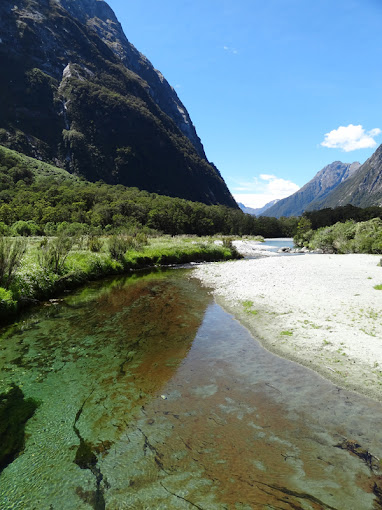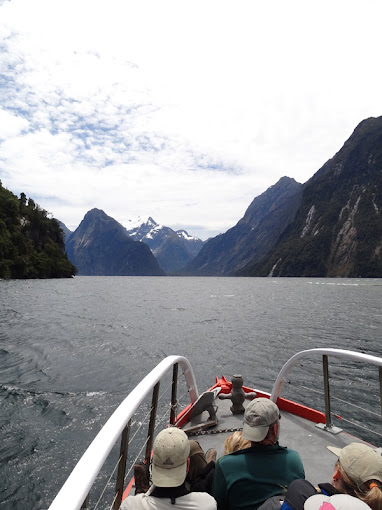The Milford Track is one of the most well-known hikes (or tramps, as they would say in New Zealand) in the world. As such, several regulations have been put in place to ensure that the trail remains pristine. During the summer peak season of October through April, access is highly regulated. A maximum of 90 hikers (40 independent, 50 guided) are allowed to start the trail each day, only in the northward direction.
Absolutely no camping is allowed anywhere on the Milford Track, so there are three huts along the route to house independent hikers (guided groups stay at private lodges with better amenities). They are the Clinton Hut, Mintaro Hut, and Dumpling Hut. Each hut has basic facilities that include bunk areas, restrooms (flush toilets but no showers), and gas cookers, but hikers must carry in all of their own food and cooking equipment.
Whether you are going independently or with a guide, booking your reservation in advance is absolutely essential as spots fill up quickly, especially during the holiday season. We made our reservations on the Department of Conservation website exactly six months in advance on the day they became available, and even then, we had to move our schedule back one day because space was already gone. During the winter season, the trail and huts are not maintained and it can be extremely dangerous to do the hike. You can read more about winter hiking here.
Throughout our four days on the trail, we didn't experience a single drop of rain, which is highly unusual. Since the Milford Track cuts through temperate rain forest, there is typically heavy precipitation at least two out of every three days. Every ranger at the huts mentioned how rare it was to see such clear, sunny weather for more than two consecutive days. We were indeed very lucky, as I had read many horror stories online about how wet the Milford Track can get, with flooding and helicopter evacuations a real possibility.
Wetland board walk
Clinton Hut
The second day gets harder, with a 10.3 mile hike up a gradual incline along Clinton Valley up to Mintaro Hut. You get your first sight of Mackinnon Pass here, along with some spectacular views of the Pompolona Ice Field. While the elevation gain wasn't large, this was still a very tiring day for us due to the heat and lack of forest cover for parts of the trail. I especially liked Mintaro Hut, as the bunk area layout upstairs afforded groups a little more privacy. Like all the huts, there is a swimming hole nearby to cool off after a long day's hike.
Mintaro Hut
Mackinnon Memorial
Bathroom with the best view in the world
Yes, there's actually a window in the bathroom
Sutherland Falls - tallest in New Zealand
Clever kea
End of the Milford Track
First view of Milford Sound
My only small regret was not seeing a wild kiwi during the hike. While rare, rangers have said that sightings are definitely possible during the dusk and early morning hours. We heard several kiwi calls on the second and third nights, but unfortunately we never actually saw one. There are, however, plenty of other interesting inhabitants throughout the area, including the insanely smart kea, a large species of parrot that is known to open backpacks and even make off with food and hiking boots.
The Milford Track was definitely the highlight of my trip to New Zealand, and I won't soon forget the awe-inspiring scenery along the way. It was strenuous, but definitely doable for anyone who is in relatively good shape. I would highly recommend experiencing the Milford Track at least once in your lifetime.










































Hello,
ReplyDeleteI'm about to do the walk this year in November. what sort of food did you take?
Hi there, for the main courses, we brought a lot of freeze-dried backpacking meals from REI (or any other outdoor gear store). All you need to do is boil hot water and mix in a large pot :) They are very high in sodium, but your body will need it after an entire day of hiking and sweating. Of course, we rounded out the diet with plenty of fruits, nuts, cereals, and snacks. We saw other hikers who also brought fresh vegetables and even eggs to cook (although I wouldn't recommend hiking with eggs)!
DeleteThank you for sharing. I am planning to go in Dec. 2017.
ReplyDeleteGreat info.